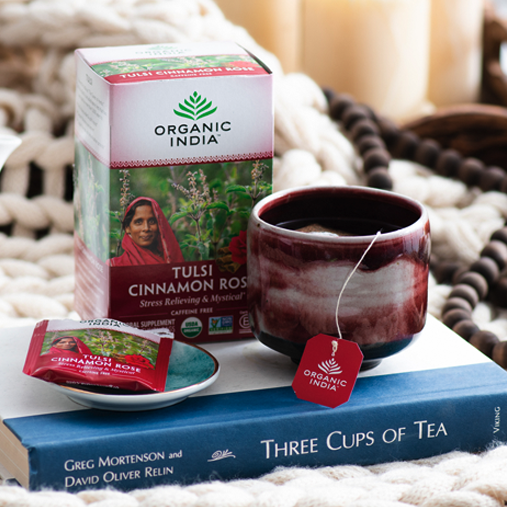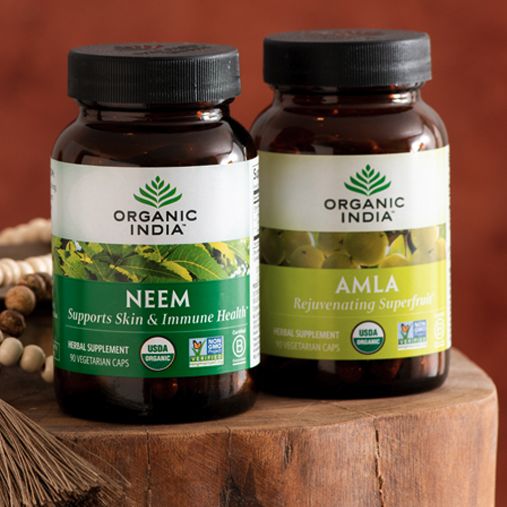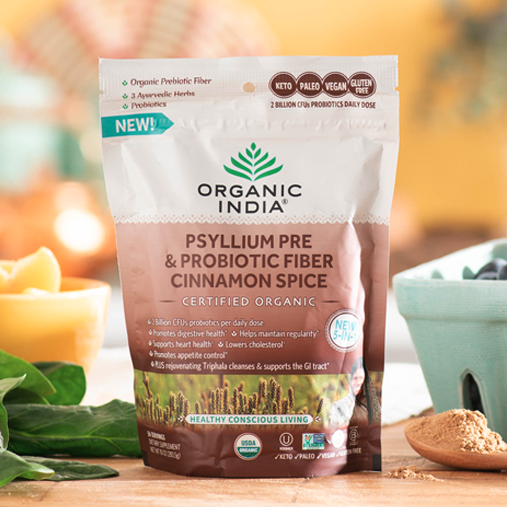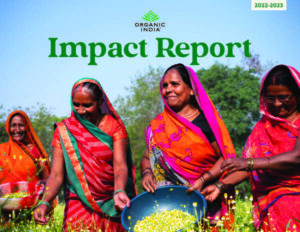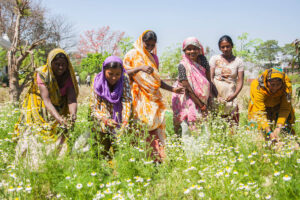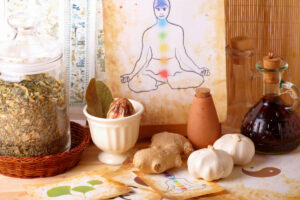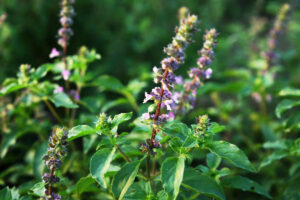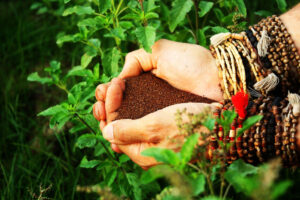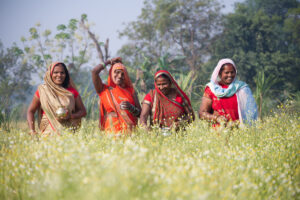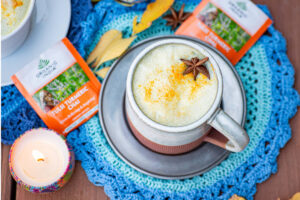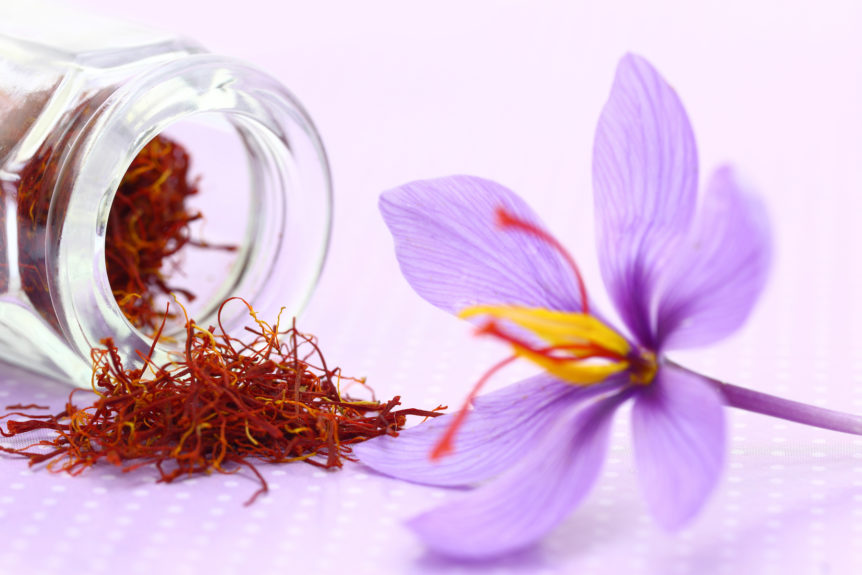Back
Familiar to cooks and chefs, saffron is known not only for its distinct color but also its premium cost. It lends its signature flavor and golden color to dishes like paella and saffron tea with ginger and honey. Saffron is also used in broths, breads, cakes, drinks, rice dishes, marinades, and so much more. But don’t let the tantalizing color distract you from the fact that saffron also has an ancient history of use as a medicinal herb. In Ayurvedic healthcare, saffron is the go-to plant for balancing all the doshas, and it persists as the source of amazing nourishment for strengthening the body.
Worth Its Weight in Gold
Saffron, also known as Kesar, comes from a boldly attractive member of the lily family — what we call the Crocus flower, one of the first signs of Spring in North America. Saffron has been cultivated by humans for so many centuries that wild forms are hardly found anywhere on earth. Domestic Crocus sativa flowers only bloom over a six-week period — from late September to early December — and must be harvested at a specific time of day. It’s during that small window that saffron’s nutrient value is at its highest, and that value is also reflected in the cost.
The stigmas, which are the parts of the flower that carry pollen, are harvested with great care and labor. After harvest, the stigmas are cured to develop flavor. This labor-intensive process accounts for saffron’s market value, arguably priced as the most expensive spice in the world. It takes 200,000 hand-picked saffron stigmas from 70,000 Crocus sativa flowers to produce a single pound (0.45 kg) of saffron. Ultimately, 170,000 flowers are needed just to create a single pound of the spice.
The world’s top producer of saffron is Iran, a country that supplies forty times more than its closest competitor, Greece. The world’s annual saffron production is estimated around 300 tons per year (Iran produces 76 percent of the total), and Iran’s production dwarfs that of the world’s next biggest producers — Afghanistan, Morocco, and India.
Saffron’s Ancient and Sacred History
From the research of entheologist Keith Cleversley, we find that ancient Egyptians used saffron in their embalming rituals, and the crop is mentioned in the Iliad in the form of a fabric dye. The Song of Songs in the Old Testament also mentions saffron, along with other plants, as one of the most precious spices.
It takes 200,000 hand-picked saffron stigmas from 70,000 Crocus sativa flowers to produce a single pound (0.45 kg) of saffron.
Saffron was cultivated in Crete and Thera in the Minoan period, where the culture considered saffron to be sacred and used it in worship of spirit, nature, and fertility. At one point, the only people allowed to harvest saffron were priestesses. The goddess Hecate, who wore robes dyed yellow by the plant, granted saffron a sacred status. In ancient Greece, it was referred to as “the blood of Hercules,” and the ancient Phoenicians baked it into crescent cakes to honor the moon goddess Ashtoreth.
Thousands of years ago, throughout the Mediterranean region, saffron was associated with sexual potency, fertility, strength, and mental sensitivity, which are all qualities still associated with the plant when used medicinally. Saffron is still known as an aphrodisiac, as well as a treatment for sexual dysfunction. Research shows that saffron has a statistically significant positive effect on sexual dysfunction, including erectile dysfunction.
A Persistent Medicinal Crop
While saffron is commonly used to turn rice into a golden work of culinary art (turmeric makes a good substitute for cooks on a financial diet), there’s plenty of evidence that it is a curative plant that’s capable of addressing an array of health imbalances — attributed to to potent carotenoid crocin. Saffron has been used in Ayurvedic healthcare for lung health, as well as a sedative, an expectorant, an emmenagogue, and an adaptogenic herb. Saffron has also been used in various opioid preparations for pain relief from the 1500s to the 1800s.
International researchers have identified saffron’s use for addressing mild-to-moderate depression, as well as to prevent retinal damage, which may offer help for those suffering from such related diseases and degenerative disorders. Anti-nociceptive and anti-inflammatory activities have been reported using the stigmas and petals of saffron. (Nociceptive pain is pain incurred from injury, when nerve fibers are triggered by inflammation, chemicals, or physical trauma). Scientific literature shows that saffron may also lead to a beneficial decrease in cholesterol and triglyceride levels, as well as a reduction in vascular damage linked to chronically high cholesterol levels.
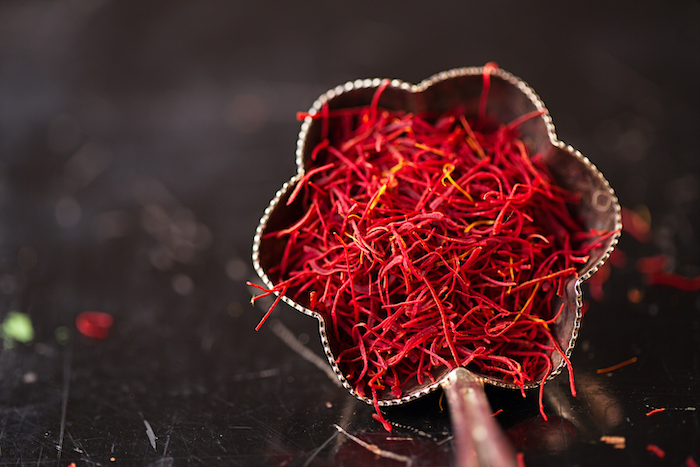
Saffron’s ability to affect the mind and emotions has long been understood, and the plant was even once used as a psychoactive agent to produce otherworldly experiences, as well as spiritual insight. Entheologist Keith Cleversley wrote that in the 18th and 19th centuries, saffron was used as an inebriant, with the effects said to resemble those of opium. However, because saffron is notoriously expensive, its psychoactive effects have hardly been studied, in favor of other more common and easily obtainable substances. That said, the saffron grown in Nepal, where it is used as an incense, is reputed to be more potently psychoactive than sources found in many other regions, and drinking an infusion of the spice is said to allow one to see the future.
A Golden Treasure on Your Dinner Table
The naturally vibrant colors in our foods are significant to our health, not just the eye. Their pigments point to carotenoids that offer healing and health via prevention. Saffron serves as one such food that has stands with distinction among the many species of the plant kingdom, serving humankind with its health-promoting, dosha-balancing, sensorial-pleasing, and precious properties.

